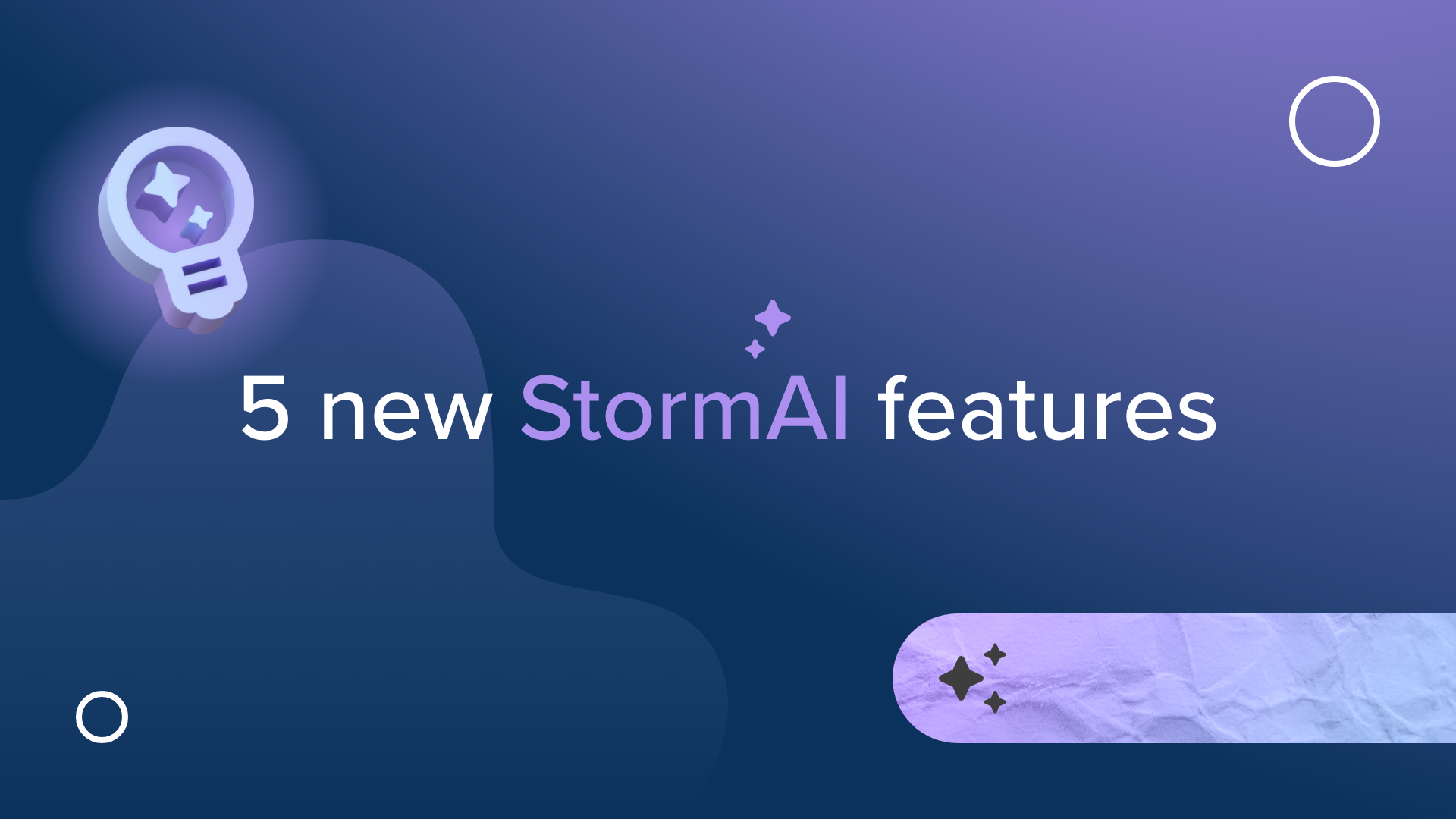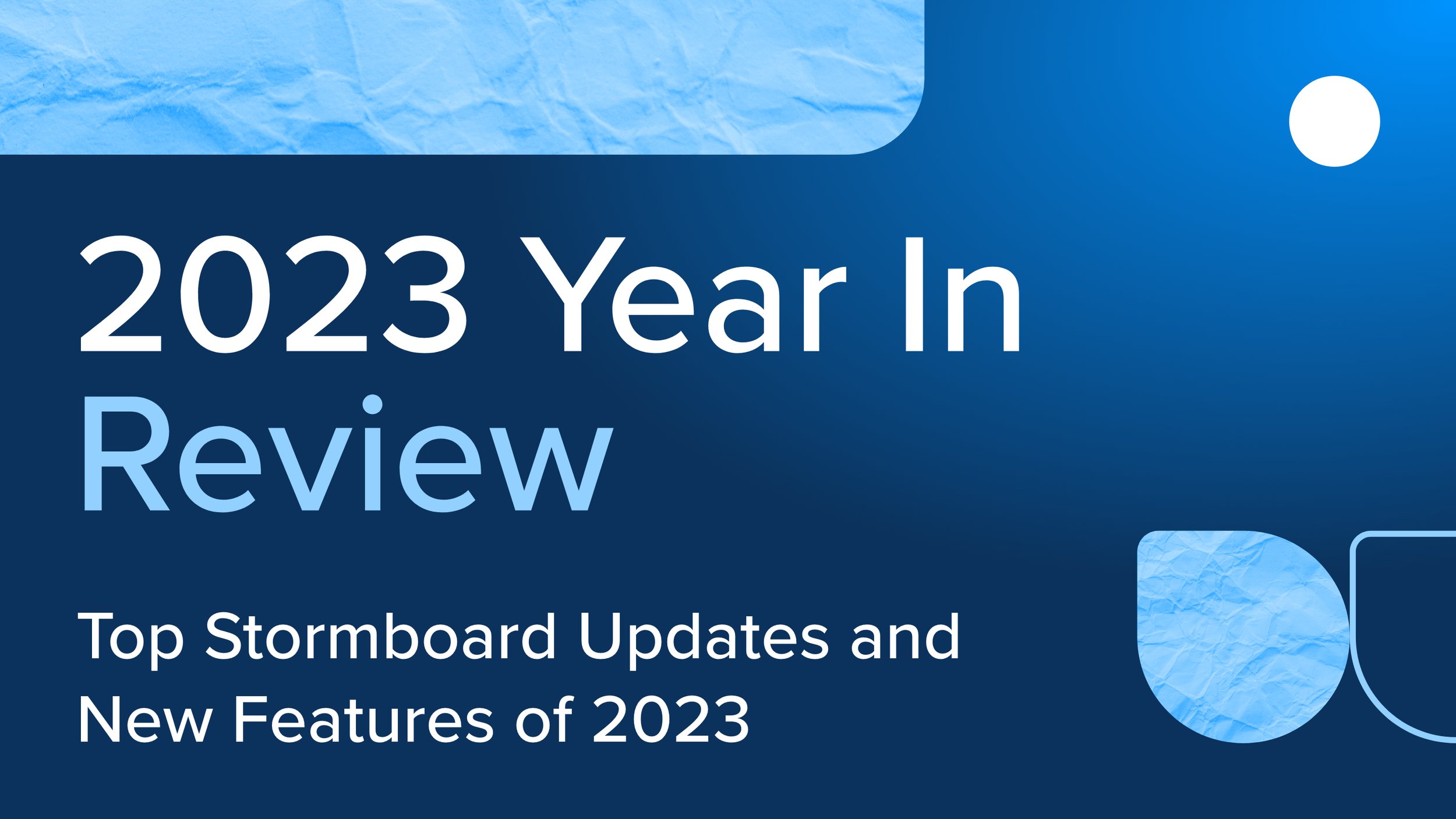Structured vs Unstructured Whiteboards: Brainstorming For Success
Photo from Pexels
When your team is attempting to problem-solve, brainstorming is one of the most powerful tools you can use to generate ideas and find innovative solutions. But how should you approach your brainstorming session? Is it better to go into it with a plan laid out and a clear structure, or to keep it open-ended and free-flowing?
The distinction being made here is between two different types of brainstorming: structured and unstructured. A team could use the structured approach and get equivalent results to a team that takes an unstructured approach – it depends on your team, your goals, and the complexity of the problem you’re trying to solve.
Let's unpack the differences between structured and unstructured brainstorming to determine which approach may be best for your team.
Structured vs Unstructured Brainstorming
As a technique, brainstorming has likely been used for thousands of years. It's the simple act of gathering a group of people together and discussing an issue; we realize that multiple minds are stronger than one, and that by bouncing ideas off of each other, we can come up with much better solutions than if we were to tackle the problem alone.
The idea of structured brainstorming is relatively new, developed in the 1940s by advertising executive Alex Osborn. To help his team break through creative blocks, he devised a set of rules for brainstorming sessions – now known as “Osborn’s Rules” – which stipulate that teams should:
Focus on quantity over quality
Withhold criticism/judgment
Welcome unusual ideas
Combine and improve upon ideas
Structured brainstorming is focused, organized, and efficient; it follows a set of guidelines that are designed to promote creative thinking within the group. It allows everyone to feel comfortable sharing their ideas without fear of criticism or judgment, encourages quick idea generation, and harnesses the collective knowledge of the team in order to produce tangible results.
This is also suitable for teams leveraging data to make decisions, but are unsure of the exact right action to take. Utilizing a structured approach enables the data to be considered from multiple angles within a structured, guided environment. This helps the data remain the central focal point, but ideas can flow more easily from it.
Unstructured brainstorming is more open-ended. There are no rules other than "be creative," and participants are free to go off on tangents if they so choose. The atmosphere is often much more relaxed and informal, which can lead to some interesting ideas being generated.
Key Differentiators
There's a very clear difference between running a structured brainstorming session and an unstructured one. Here's the breakdown:
Structured sessions usually encourage equal participation from everyone involved. Unstructured sessions are more spontaneous, and anyone can choose to speak or not speak.
In a structured session, ideas are generated quickly and efficiently, and are often informed by data (i.e., we are trying to solve for problem X). In an unstructured session, ideas can take longer to come up with because they are often starting from scratch.
Structured sessions are typically organized and goal-oriented with a set agenda for the order of discussion. Unstructured sessions are spontaneous, and often times more relaxed with no predetermined order or goal.
Structured brainstorming is ideal for complex, multi-faceted problems that require in-depth analysis and discussion. Unstructured brainstorming is better suited for simpler, more straightforward issues where a few creative ideas can be quickly generated.
An unstructured brainstorming session suits creative ideation; for instance, coming up with the next logo design. If the goal is to generate a list of potential solutions to a problem, that's where a structured approach can truly shine.
Virtual Whiteboards
Software-as-a-service tools are being used heavily to augment the modern office – especially for tasks like brainstorming. Many teams use something called a collaborative whiteboard, which is an online tool with a digital canvas for ideas.
These whiteboards are often used for unstructured brainstorming because they allow users to quickly add and rearrange their thoughts without the need for structure or organization. Tools like Stormboard, though, are designed to support data and goal-oriented structured brainstorming as well, while still allowing for free-flowing and creative ideas.
Let's zoom in on the two software types.
Unstructured Digital Whiteboards
Most business communication tools - like Slack, Zoom, or MS Teams have a whiteboard functionality that comes with the chat and video conferencing functions. These are excellent examples of unstructured digital whiteboards. While yes, they've got a host of collaborative tools to make it easier for teams, they are still largely unstructured.
The canvas is the main focus of these tools – and users can freely add notes, images, videos, sketches, and more around the board without any specific order or organization. They're ideal for creative ideation sessions where people just need a place to put their ideas down quickly and share them with others.
Structured Digital Whiteboards
Sometimes, free-flowing whiteboards aren't quite data-focused enough for more intensive brainstorming and problem-solving. It tends to take a lot longer to reach conclusions, which isn't a problem if you have plenty of time to spare, but can be a real hindrance when deadlines are involved.
Tools like ours (Stormboard) sidestep this issue by providing templates, guides, prompts, and step-by-step instructional approaches. In other words – you aren't left wondering what to think about next. Every step of the ideation process is laid out for you, giving you a better handle on the direction of the conversation.
Choosing Your Ideal Method
It wouldn't be accurate to say that one method (structured or unstructured) is better, nor would it make sense to choose one method indefinitely. The idea is that you use the strategy best suited to your task at hand.
For instance: imagine your team is trying to come up with a corporate branding refresh. You may want to start out by thinking of ideas, color palettes, and designs, and sketching them out on an unstructured whiteboard, but you'd probably want to move over to something more structured when it's time to prioritize, get more involvement across departments, and take steps towards implementation.
If you're trying to plan out a pre-structured resource – like a development team working through a product launch plan, or a marketing team creating an editorial calendar – you're going to be using a structured brainstorm by default. In this case, a structured whiteboard gives you the templating capabilities you need to create step-by-step, while also assigning tasks, tracking progress, and creating reporting deliverables.
But there's still a question hanging in the air. What kind of tool should you invest in? You won't want to spend time and money on two different virtual whiteboards if one can do the trick.
Buying something structured is usually the way to go. You won't always use the high-intensity templates, planning tools, and step-by-step methods, but at least you've got them when you need them. Unstructured whiteboards don't typically cater to both.
Stormboard is proud to be an industry leader in this space - our solution can cater to both needs. Whether you do need a quick space to scribble out ideas or draw a new logo, or work through a problem with your team. What makes Stormboard truly unique is our structured environment suited for most data-driven business processes, planning, and ideating.
Setting Up Your Structured Brainstorming Session
While the discussion around structured vs unstructured whiteboards is important, it's still only a part of the puzzle. Brainstorming sessions need to be carefully planned and managed in order to ensure that everyone gets their points across without too much overlap or confusion.
Here are some tips to get you started:
1. Set a clear goal for the session. What do you want to accomplish? When you walk away from the session, what new and actionable information points should you now have?
2. Create a timeline and stick to it. Brainstorming sessions can be long and drawn out, so make sure you have an agenda with specific time limits for each topic or exercise.
3. Manage the conversation. Who's in charge of what? It's important to assign roles – such as moderator, scribe, and facilitator – in order to keep things focused and on track.
4. Make sure everyone has a chance to speak up and that their ideas are heard. Encourage each team member to share their thoughts even if they feel like their idea may not be the best option. Ideas can transform and evolve when others contribute to the conversation.
5. Use structured whiteboards whenever possible – they help you stay organized and focused on actionable outcomes.
By following these tips, you'll be able to effectively manage your brainstorming session regardless of whether it's structured or unstructured in nature.
Wrap Up
When ideating from scratch, you need something that can capture all of your ideas and let them evolve – and unstructured whiteboards are great for this. Structured whiteboards allow you to then move on and create plans and action items more easily.
Remember to plan your brainstorming session carefully and use the right tools to ensure everyone's ideas are heard. With a bit of practice, you'll be able to effectively manage both structured and unstructured whiteboards for successful brainstorms.
Stormboard is the data-first collaborative workflow platform that turns unstructured interactions into data-rich collaborative workspaces, creating new structured and actionable data from normal human collaboration, whether in-person or across distance.
Speak to one of our collaboration experts today and find out what the right tool for your business is.
About the author:
A programmer by trade, Nick Saraev is a freelance writer and entrepreneur with a penchant for helping people excel in their careers. He's been featured on Popular Mechanics & Apple News, and has founded several successful companies in e-commerce, marketing, and artificial intelligence. When he's not working on his latest project, you can find him hiking or painting.










